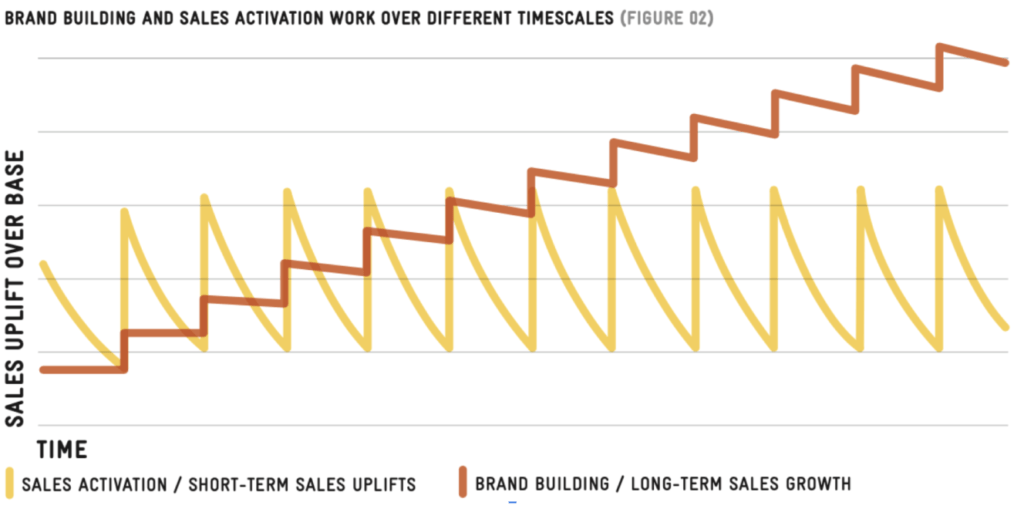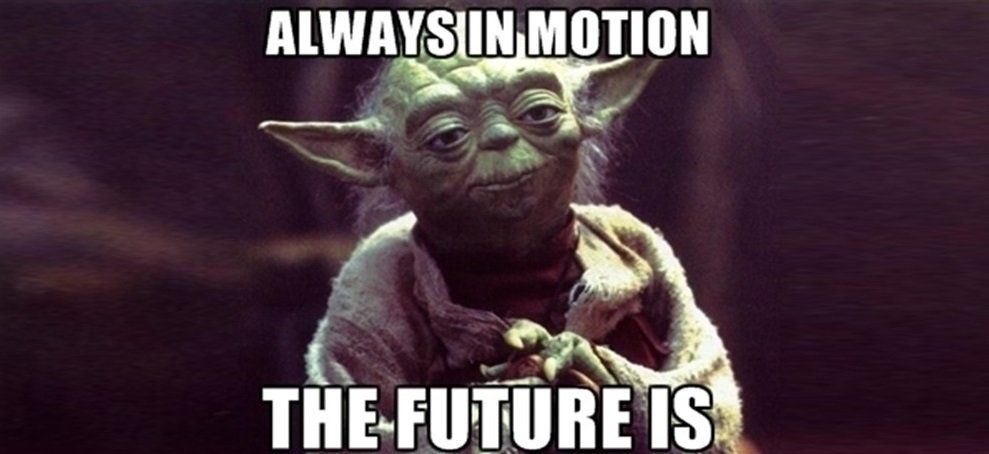5 situations when influencers do not completely suck
5 situations when influencers do not completely suck
We always approach marketing trends with a skeptical eye and a triple measure, and influencer marketing is no exception. While some cannot imagine a future for brands without influencers, both live and virtual, we keep our enthusiasm in check. With a healthy dose of skepticism, we have summarized situations where influencers can truly bring business success. Yes, eventually, we found a few. Does this apply to you? Read on!
When does it make sense for a brand to collaborate with influencers?
Let’s get straight to it. Here are five situations when you might consider contacting your favorite influencer.
1. When you need to increase reach with a small budget
Collaborating with an influencer is an effective way to achieve a broader reach in your target group (thus increasing brand awareness), even if you are a startup with a small advertising budget. The prerequisite is of course a product or service attractive enough to convince an influencer to accept a barter or lower fee. In this context, some talk about influencers as a catapult that launches startups to their first customers.
2. When you want to reach younger generations (Gen Z, Gen Alpha)
These generations tend to trust content that is authentic and non-commercial. Conversely, they exhibit skepticism and aversion to advertising messages. Some even hardly open Google search and base most of their purchasing decisions on recommendations from influencers and creators on TikTok. If a large part of your target audience consists of these generations, you could consider engaging influencers.
3. When you need to create instant buzz
Short-term influencer campaigns are ideal for special events in your brand’s life, such as product launches. They create buzz among the target audience and support the trial of a new product.
4. When you have a niche target audience and no research
Sometimes influencers understand their audience better than brands understand their target customers. They know which type of content is not only relevant but also resonates on a deeper level. If you do not conduct market research, do not organize focus groups, and are not in daily contact with your customers, then an influencer can help you keep your finger on the pulse of the times, even in a very specific or dynamic segment.
5. When operating in a regulated segment
Collaborating with influencers may be one of the few ways to promote products in a regulated segment that otherwise does not allow paid advertising on social media. This is somewhat of a gray area, which can be utilized by brands with CBD products, electronic cigarettes, etc.
Paradoxes of influencer marketing
For an influencer collab to be really effective in business terms, two things are crucial. Yet they often contradict each other: the influencer’s reach and their authenticity.
The need for reach is obvious. Brands grow by regularly addressing the largest part possible of their target audience. And why is authenticity important? On social networks, first and foremost we all want to be entertained or educated, and if a brand’s message is overtly commercial, we automatically skip, scroll, and mute it. This is especially true for younger generations, who excel at ignoring advertising messages. Brands need to find ways to reach consumers on networks in a subtle or at least authentic manner – simply put, in a way that consumers are willing to pay attention to and from which they can feel positive emotions. Ideally, influencers and creators allow brands to do just that. Ideally, they also have an aura of authority that can influence the opinions, behaviors, and decisions of their audience. Particularly younger consumers trust them and consider them relevant sources of information that guide their consumer behavior.
Often, however, it ends up other than ideal – collaboration with an influencer is overtly commercial and lacks authenticity. If it is obvious that the product or brand does not really suit the influencer, it won’t be successful among fans and will lead to a loss of trust in both the influencer and the brand. The same applies to versatile influencers who promote everything that comes their way, from collagen to plastic surgery clinics. This often happens especially with larger influencers or celebrities, who are exploited by a large number of brands due to their extensive reach. Here, the reach and authenticity of communication do not work together.
Authenticity and credibility are, after all, things where influencers often have a weaker reputation than plain money-driven businesses, as demonstrated, for example, by Mark Ritson in his juicy experiment. A brand seeking suitable influencers balances primarily extensive reach with authenticity and trust in the influencer. And of course, the budget comes first. The solution for extensive reach while maintaining authentic communication might be so-called raids – at one moment, you select a larger number of small, specialized influencers or experts on a particular topic.
Setting up your influencer marketing strategy
Creating an effective influencer marketing strategy starts by setting goals. Do you need to build brand awareness in the long-term? Increase sales? Or create a short-term buzz around a new product? Your goals will determine the form of influencer collaboration, ranging from brand videos to influencer events to discount codes. At the intersection of goals, target group, brand image, and budget, you will find names worth approaching. It is crucial to select influencers whose values, content, and style align with your brand image.
The next step is to integrate influencer marketing with your marketing strategy and, ideally, create a comprehensive campaign with a broader media mix.
In the creative process, give influencers and creators freedom. Trust that they know their followers just a bit better than you do and that they have insights you have not yet gained from any research. Therefore, give them free rein and just ensure compliance with the main values of the brand. Authenticity and creativity are the main pillars of a campaign’s success.
And what comes in the end? What else than measurement. Choose KPIs as close as possible to your objectives: for the objective of building a brand, your KPI will be the influencer’s reach in the target group; for the goal of increasing sales, it will be conversions. The fewer KPIs and objectives monitored, the better for your results. Learn from the results and contact us for collaboration.
Why 90 % of brands fail on social media
Why 90 % of brands fail on social media
We will break basic copywriting rules and tell you the answer right in the first sentence: 90 % of brands fail in brand building on social media because they focus on engagement, rely on organic reach, and do not have nor use brand elements. Ultimately, they do not stand a chance of reaching a larger part of their target audience and creating a memorable message. Classic plot twist: we know how to do it right and effectively. In this article, we reveal a large part of our social media brand building know-how. We talk about four basic tactics and how to update and adapt them to today’s environment. We draw primarily from the teachings of Byron Sharp, Jenni Romaniuk, Les Binet & Peter Field, and the social agency Born Social.
4 timeless tactics for brand building on social media
1. Growth through market penetration
If we’re talking about brand growth in terms of market share growth, then the key is to regularly address the largest possible number of people within the target segment. In the past, brand communication was often limited to building relationship with loyal customers, based on the belief that retention and repeat purchases are cheaper from a marketing cost perspective than acquiring new customers.
However, current marketing knowledge and research from the Ehrenberg-Bass Institute show that market share growth is very difficult to achieve without strong acquisitions and gaining new (predominantly disloyal and occasional) customers. Therefore, it makes no sense to try to increase the loyalty of existing customers or to win customers from competitors, as they only represent a percentage of the market. Instead, brands should focus on gaining customers who have not yet bought from anyone in their category.
What does this mean for your social media strategy? Focus on the right ad settings—optimize ads for reach and set broad targeting for the largest possible impact in the target segment. The goal is to reach about 70% of your target group through social media advertising platforms.
 Source: How Brands Grow, Byron Sharp: Ehrenberg-Bass Institute for Marketing Science
Source: How Brands Grow, Byron Sharp: Ehrenberg-Bass Institute for Marketing Science
2. Balancing brand and activation
The need for quick results, which especially pleases your CFO, often leads to prioritizing activation / sales communication on social media. However, research by Binet and Field shows that short-term sales increases do not lead to long-term brand growth. If you want to build a brand that grows over the long term, you need to focus on increasing mental availability.
Even from the perspective of the buying cycle, it makes sense to combine activation and brand communication. Up to 95 % of the market (including your potential customers) currently (or at any randomly selected moment during the year) are not thinking about purchasing the selected product or service, and you have no chance to convert them into your customers. For them, you try to build the brand’s mental availability so that when the need arises, your brand is one of the first that comes to mind. The remaining 5 % of the market, who need your product right now, you try to persuade through sales communication.
What does this mean for your social media strategy? Divide resources between activation and brand communication, thus balancing short-term and long-term marketing goals. The ideal budget split between activation and brand varies between categories, but as a golden ratio averaged across market segments, it is 60:40 in favor of brand communication.
Source: The Long and the Short of it: Balancing Short and Long-Term Marketing Strategies, Les Binet & Peter Field
3. Distinctiveness, under all circumstances
According to current knowledge in marketing and consumer psychology, consumers actually do not distinguish much between one brand and another, and strong brand loyalty is often a fictional phenomenon. Larger brands compete with each other primarily for mental availability (who comes to mind first in a purchasing situation). Therefore, brands should not try so hard to convince consumers that they are better than the competition, but instead work on creating a stronger mental availability (everything that is associated with your brand in the consumer’s mind) than the competition.
In this regard, creativity in communication is crucial to overcome people’s indifference to ads. However, we also want to talk about brand elements here—visual or auditory elements that are uniquely associated with your brand and distinguish it from the competition. They facilitate the brand’s journey into the viewer’s mind, help improve its memorability amid a flood of advertising messages, and over time, help build mental availability. This could include a logo, slogan, jingle, colors, brand face, and more.
What does this mean for your social media strategy? Clearly define your unique brand elements (different from the competition) and use them consistently across all communication (not just social).
4. Shared perception of the brand
Strong brands are those that have their place in social culture and are perceived the same by all their members. According to Kevin Simler’s theory, advertising works through cultural imprinting – a collective understanding of what the brand means and what values it represents. Thus, brand building is not just about influencing individuals but also about creating a collective image of the brand that emerges from a given culture. Think of cultures in this context more in terms of interest groups or smaller subcultures on social media.
What does this mean for your social media strategy? Identify your culture (there may be more than one within your target group) and get to know it closely. Study its typical behavior, including the best insights and jokes.
The environment is changing, 4 brand-building tactics persist – almost
It might seem that digital simplifies and democratizes marketing communication; even with a smaller budget and without a hundred-page strategy, even small brands can find effective ways to build their mental availability. On the other hand, digital also brings a significant challenge that becomes even more pronounced over time (along with the growth of social platforms and the number of users registered on them).
The challenge is the decentralization of communication; simply put, digital takes some influence away from brands and gives it to communities. Brands thus transform from monolithic entities into a collection of scattered fragments, often lying outside their direct control. In such an environment, maintaining consistent communication and a coherent brand image becomes a significantly more complex task and requires a new interpretation and application of the four basic tactics for building a brand on social media.
The way forward: brand building of the future
Tactic: growth through market penetration (broad reach)
Challenge: Brands compete for user attention, which is increasingly becoming a scarce commodity. With the growing number of platforms and brands present on them, user attention steadily declines, and they become immune to advertising messages.
The way forward: Reach users through multiple contact points. Utilize a mix of different social platforms and their specific visual formats, which together work synergistically and support each other in creating mental availability.
Tactic: balancing brand and sales
Challenge: perceiving brand-building and activation as competitive activities that vie for the marketing budget and operate separately, if not oppositely. In this regard, there is an increasing push for quick results (also in connection with economic uncertainty) and a reluctance to invest in long-term brand-awareness, which will deliver results over the years.
The way forward: Apply the principles of marketing effectiveness, that is, the integration of brand and activation communication across the entire marketing funnel, so that they work synergistically. Specifically: testing, scaling, and analytics for brand communication; and conversely, storytelling and emotions in activation communication. Select effective formats and channels for both lines of communication. Utilize social commerce tools for activation.
Tactic: distinctiveness and brand elements
Challenge: For brands, it is increasingly difficult to maintain a consistent presentation in the environment of social networks, which also gives a strong voice to consumers and influencers. The brand image is no longer created just by what the brand itself says and how it presents itself, but also by what others say about it and how they present it.
The Way Forward: Ensure consistency in brand presentation using soft power—subtly guide consumers and influencers in the desired direction. Use product elements instead of brand elements.
Tactic: shared perception of the brand
Challenge: the rise of a huge number of smaller and very specific subcultures with which consumers identify.
The way forward: Identify your own subcultures to which the brand speaks and their typical cultural codes (language, insight jokes, aesthetics, etc.). Build brand communication based on these cultural codes and the values of the subculture.






